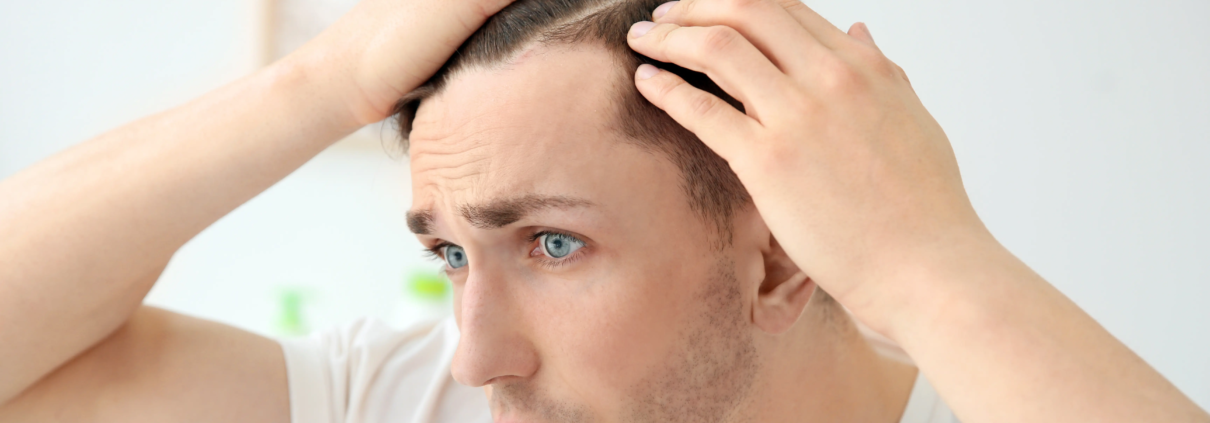How to Reverse Widows Peak? An Ultimate Guide
Introduction
The term widows peak is a v shaped pattern hair loss condition also known as, frontonasal dysplasia, or a receding hairline, appearing in the middle of your forehead. Some people like it, but others might want to change it. Good news! There are different ways to deal with it, like without surgery or with surgery. In this article, we’ll talk about these options, how it’s related to your genes, how your lifestyle can affect it, and how you can keep a properly shaped hairline. So, if you want to reverse widows peak, read on.
Understanding Genes
A widow’s peak is mostly because of your family’s genes. It’s something that can be passed down from your parents to you. Genes control how your hair grows, including receding hairline conditions such as frontal fibrosing alopecia, aarskog syndrome, and other rare genetic disorder associated with hair loss. It’s not just one gene, though, it’s a mix of different genes that work together. Researchers think that two specific genes play a part in making a widow’s peak. It looks like a V-shape because of how the hair grows on your forehead. It goes down and inwards in the middle, and this is because of the genes we talked about earlier. Knowing this helps us think about ways to reverse widow’s peak.
Sometimes, hairline issues are related to rare genetic conditions like Donnai Barrow syndrome or Opitz G/BBB syndrome. These conditions can cause unique challenges and may require specialized care.
Other Things That Affect Your Hairline
Your genes aren’t the only things that matter. Hormones can change your hair, especially during big life events like puberty, pregnancy, or menopause. Also, stuff in the environment, like chemicals or pollution, can mess with your hair.
Some people are happy with their widow’s peak, but others want to make it different. You can do this with things like hair transplants or laser hair removal. These treatments are done by experts and can help you get the look you want. But be careful because these treatments have risks too. It’s important to talk to a doctor before deciding.
Types of hairlines vary from person to person, and some may prefer a straight hairline over a V-shaped one. Deciding to change your hairline is a personal choice and should be made with careful consideration.
How Your Life Affects Your Hair
Genes are important, but so is how you live your life. What you eat is one thing. Foods with vitamins like A, C, and E, plus biotin and folic acid, can help your hair grow well. Eating stuff like leafy greens, fish, nuts, and eggs can give you these nutrients.
But eating too much sugar and bad fats can hurt your hair. They can cause problems with your hair follicles. On the other hand, foods with lots of antioxidants, like berries and green tea, can keep your hair healthy.
You need to drink enough water too. If you don’t, your hair can get dry and break more easily.
Stress can mess with your hair too. It can make you lose hair, including your widow’s peak. Stress can also make you do things like pull or scratch your hair too much, which can lead to more hair loss. To help with stress, you can try things like exercising, meditating, and self-care. These can help your hair and make you feel better.
Taking Care of Your Hairline
So, to sum it up, genes are important for your widow’s peak, but your lifestyle matters too. If you want to have a nice hairline, eat well, stay hydrated, manage stress, and take care of yourself.
No Surgery Ways to Reverse Widows Peak
If you don’t want surgery, there are other things you can try to change your widow’s peak. You can use hair growth supplements and vitamins. Things like biotin, vitamin D, vitamin E, zinc, and iron can help your hair grow better. These things can make your hairline look different.
There are also treatments that you can put on your scalp, like minoxidil. The FDA says it’s okay to use this to help your hair grow back. But it doesn’t work for everyone, and you have to use it the right way. Talk to a doctor to see if this is good for you.
Surgery to Reverse Widows Peak
If you don’t like the non-surgery stuff or are willing to remove unwanted hair, you can think about surgery. But this is a bigger deal and you need to talk to a good doctor. One kind of surgery is called a hair transplant. They take hair from one place on your head and put it where you want more hair. Another kind of surgery is scalp reduction. They take out a piece of your scalp and pull your hairline down to make it lower. These surgeries should only be done by experts who know what they’re doing.
Taking Care of Your New Hairline
If you have surgery to reverse widows peak, you have to take care of it afterward. This means washing it in a special way and being careful with it. You also need to protect it from the sun and other things that can hurt it. It’s a big deal to do this kind of surgery, so talk to a good doctor about what to expect
Conclusion
In the end, if you don’t like your widow’s peak, there are lots of ways to change it. You can learn about your genes, take care of your health, and maybe try non-surgery or surgery. Just make sure to talk to a doctor and be sure it’s what you want.
Check out the super cool HairLife DNA test – it’s like a magical tool for fixing hair problems. It looks at your genes (the things that make you unique) and tells you how to take care of your hair the best way to reverse widows peak. That means you get a special plan just for you, based on science, to make your hair healthier and more even.
Know more about HairLife.





